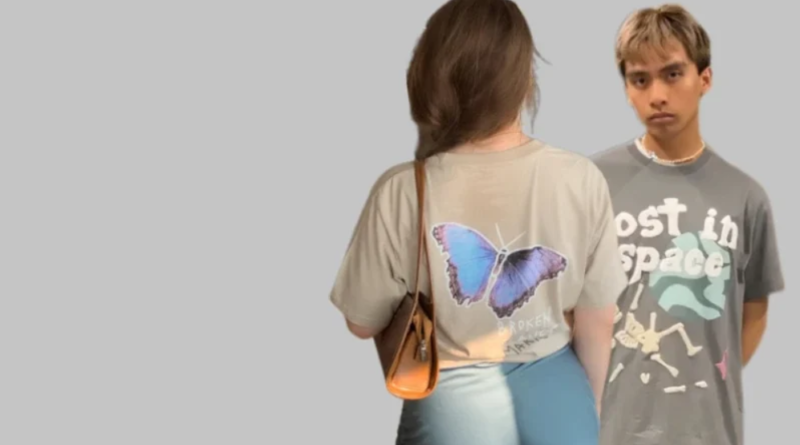The Fabric of Fashion Weaving Identity, and Innovation
Fashion is a dynamic and ever-evolving art form that intertwines with the threads of human history, culture, and personal expression. As we explore the intricate fabric of fashion, we uncover its profound impact on identity, its reflection of societal changes, and its role in driving innovation and creativity. Join us on a journey through the world of fashion, where style and substance come together to tell the story of who we are.
Visit: https://obeyclothingshop.com/
Ancient Beginnings: Fashion as a Marker of Status and Belief
Fashion’s journey begins in ancient civilizations, where clothing was not just a necessity but a significant marker of social status, cultural identity, and religious beliefs. In Mesopotamia, the cradle of civilization, garments were made from wool and linen, often dyed in vibrant colors and adorned with intricate patterns. These early fashions reflected the wearer’s status and role in society, with priests, royalty, and commoners each donning distinct styles.
In ancient Egypt, fashion was closely linked to the afterlife and spirituality. The use of linen, a fabric that symbolized purity, and the elaborate jewelry worn by pharaohs and nobles, were meant to reflect their divine connection and ensure their status in the afterlife. Similarly, in ancient Greece and Rome, clothing styles such as the toga and chiton were not only practical but also served to denote one’s social standing and citizenship.
Medieval to Renaissance: Craftsmanship and Cultural Flourishing
The medieval period saw fashion become more complex and layered, with elaborate designs that showcased the wearer’s wealth and status. The use of luxurious fabrics like silk and velvet, often imported from distant lands, signified wealth and power. Clothing during this time was also heavily influenced by the church, with modesty and piety being key considerations in design.
The Renaissance era brought a dramatic shift as fashion began to reflect the era’s cultural and intellectual flourishing. Art, literature, and science influenced fashion, leading to more tailored and sophisticated clothing. The introduction of new materials and techniques, such as lace and embroidery, allowed for greater expression and individuality. Fashion became an art form, with garments designed to highlight the beauty of the human form and the wearer’s status and sophistication.
Industrial Revolution: The Birth of Modern Fashion
The Industrial Revolution marked a turning point in fashion, with the advent of mass production making stylish clothing more accessible to the general public. The invention of the sewing machine and the rise of textile factories revolutionized the fashion industry, leading to the proliferation of ready-to-wear clothing. This democratization of fashion meant that trends could spread more rapidly, and fashion became a reflection of the broader social changes brought about by industrialization.
During this time, fashion also began to mirror the growing movements for social change. The suffragette movement, for example, saw women adopting more practical and less restrictive clothing as a statement of their fight for equality. This period also saw the emergence of fashion icons such as Charles Frederick Worth, who is often credited with founding haute couture and setting the stage for the modern fashion industry.
20th Century: Fashion as a Reflection of Social Change
The 20th century was a period of rapid change and innovation in fashion, driven by the tumultuous social and political landscape. The flapper dresses of the 1920s, with their loose silhouettes and shorter hemlines, symbolized the newfound freedom and independence of women. The 1950s brought the glamour and elegance of Dior’s “New Look,” which emphasized femininity and luxury in the post-war era.
The 1960s and 70s saw fashion become a powerful medium for social and cultural expression. The mod movement in Britain, the bohemian styles of the hippie era, and the punk rebellion all used fashion to challenge the status quo and express individuality and dissent. Designers like Mary Quant, Yves Saint Laurent, and Vivienne Westwood became icons of these movements, pushing the boundaries of fashion and societal norms.
Digital Age: The Revolution of Fashion Accessibility and Innovation
In the 21st century, technology has revolutionized the fashion industry, making it more accessible and interconnected than ever before. Social media platforms such as Instagram and TikTok have democratized fashion, allowing individuals from all over the world to share their personal style and influence trends. This digital revolution has also given rise to a new generation of fashion influencers who shape the industry with their unique voices and perspectives.
E-commerce has transformed the way we shop, making fashion more accessible and convenient. Virtual fashion shows, augmented reality fitting rooms, and AI-driven personalization have enhanced the shopping experience, blending technology with traditional retail. This era has also seen a growing emphasis on sustainability and ethical practices, with consumers and brands alike prioritizing eco-friendly materials and transparent supply chains.
Fashion as a Cultural and Personal Statement
Throughout history, fashion has been a powerful reflection of the times, capturing the essence of cultural shifts, technological advancements, and social movements. It has the power to convey personal identity, challenge societal norms, and inspire creativity. From the intricate weaves of ancient civilizations to the digital threads of today’s globalized world, fashion continues to be a dynamic and evolving art form.
In conclusion, fashion is a rich tapestry that weaves together the past and present, tradition and innovation, personal expression and cultural identity. As we continue to explore and create, let us celebrate the diversity and creativity that fashion brings to our lives, and embrace its potential to inspire and transform.
Visit: Revenge Hoodie

